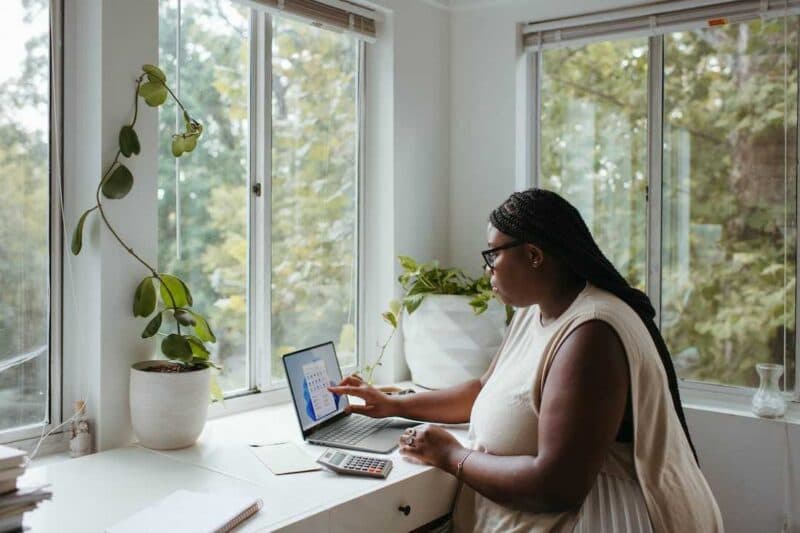The Future of Work After COVID-19: What Employees Should Expect

8 Minutes

Team Curative

Nov 19, 2022
The Future of Work After COVID-19: What to Expect as an Employee
Nearly every global trade has been majorly disrupted by COVID-19, forcing industry leaders to rethink their business models. With millions of lost jobs giving way to a multi-trillion dollar crisis, employees in all sectors have looming questions about the future of work as the world adjusts post-COVID-19. There is a strong belief that COVID-19 forced us into a new future with social distancing mandates necessitating sudden and intense reliability on virtual tools. As in-person restrictions continue to be lifted, however, will operations return to how they were before? Now that the world has established a new normal, how will the future take shape after COVID-19? For instance, as workplace dynamics continue to change, some personnel wonder if COVID-19 testing will become a permanent part of the working landscape in the future. From new remote work models to a shifted focus on human well-being, there are several key indicators of the future of work. Let’s take a look at how both short and long-term disruptions have impacted the future of jobs after COVID-19 and what you can expect as an employee moving forward in the working world. The COVID-19 pandemic shifted the workforce, changing what people can expect in the future of work.

Three Ways COVID-19 Has Changed the Working Landscape for Employees
Employees and employers alike have seen substantial changes to the way the daily working world operates. It’s no secret that unemployment rates soared in the early days of COVID-19, with many industries still reeling from the pandemic’s initial effects. While shifts in the workforce continue to reflect different working landscapes, three major transformations have happened for certain:
1. Digital Environments Are Here to Stay
In the wake of COVID-19, businesses have had to adjust to remote work settings, integrating digital workplaces in a way previously not taken advantage of to its full capacity. Hybrid and fully-remote work models entering the mainstream indicates one of the biggest day-to-day changes for the average employee after COVID-19. Many employees find that working remotely has a positive impact on their working capacity, job efficiency, and ability to more easily manage a work-life balance. It has become difficult for industry leaders to maintain steady in-person participation due to these changing work preferences. A recent study by Gartner showed that organizations looking to return to being entirely on-site risk losing up to 39% of their workforce.
2. Individual Health and Well-Being Matter More
No matter how directly COVID-19 impacted an individual’s personal life, it is likely that their working life dramatically changed post-pandemic. Such an intense loss of lives, jobs, and societal normalcy made employers want to track experience metrics differently. A positive outcome of these sudden and intense workplace shifts is an increase in employer investment in their employees’ physical and mental health. In fact, employers are discovering how to help employees maintain their well-being, whether they are working remotely or in-office. Hiring managers and HR reps are starting to offer gym memberships, paid app services, coworking spaces, mental health counseling services, and access to additional programs that support an individual’s health and well-being. As work environments continue to shift rapidly, innovative ideas will be necessary to support employee comfort and safety as a key metric for the future of work after COVID-19.
3. Online Medical and Delivery Service Employment Rates are High
The early COVID-19 lockdown forced many stores to close their brick-and-mortar doors; however, many of them were able to continue selling their products online. This changed the job application landscape quite a bit for employees looking to continue working in health care, but are now faced with many online and virtual positions. Shopping on the internet has been a wildly popular trend for some time, but since COVID-19, the number of patients utilizing the Internet for digital medical care is the highest it’s ever been. There are no signs of that number dwindling anytime soon. One way we see this reflected in the health care sector is with the mounting number of partnerships between health care providers and medical services to offer the most diverse opportunities to the largest number of people. Curative is jumping on this initiative with Curative Telehealth, a service providing 24/7 virtual urgent care through a network of local doctors. Patients are looking for ways to engage with their health care providers virtually, and digital consultations offer a level of accessibility and convenience that may not always be achieved with in-person visits. Delivery services started ramping up as well. Early COVID-19 lockdown measures created unavoidable demands for better delivery services in all industries, compelling many companies to step their services up a notch – and hire more delivery drivers as a result. As an example, pharmaceutical providers are offering more free and same-day delivery services on a myriad of preferred medications than ever before, including our new health plan pharmacy benefit. This can be a win-win situation for employees who benefit both from the increased ease of access to deliveries and the influx of job opportunities in delivery services itself. Digital work environments, importance of individual wellbeing, and telehealth and medical delivery services will shape the future of work and health care.
What to Expect for the Future of Jobs After COVID-19
COVID-19 brought many major adjustments to the table that initially felt novel and unique but have now become daily necessities that we can’t imagine our working lives without. Employees in all industries have had to adapt to technologies to keep up with irregular or unpredictable demands in a post-COVID-19 world. Enterprises and small businesses alike have started to remodel the very meaning of their work while relying more on advancing technology to make the future more cohesive. Something that has cropped up among many industries is advanced automation, bringing artificial intelligence (or AI) to the general workforce like never before. Companies are starting to rely on AI more and more post-COVID-19, with no backtracking in sight. How is automation going to change the scope of job descriptions for employees across the board? The overarching sense of urgency has propelled both employers and employees to prioritize needed skills over preferable skills. Workers are pursuing jobs in entirely new fields as job descriptions continue changing to meet the world’s still-fluctuating needs. Employers and Human Resources leaders are looking more at a person’s value while placing a higher emphasis on their health and well-being, both in and beyond the workplace.
How to Stay Safe in a Transitioning World
It can be difficult at times to feel good about what the future of jobs after COVID-19 holds when your own daily working landscape is constantly shifting. While there is a degree of uncertainty hanging about, there are truths about the future of work after COVID-19 that we know of. Businesses continue to build safer, healthier, and more efficient job opportunities that employees have more flexible access to. Industries continue to operate on the same standards that kept us safe during the height of the crisis and consistently ease the confusion that can come from transitional work. Your workplace may continue to follow CDC guidelines regarding safety and sanitation in shared spaces. Depending on your line of work, you can look forward to a possible transition into a remote or hybrid model to add more flexibility to your day. Regular COVID-19 testing is still recommended – and still accessible. It is easier than ever to book a COVID-19 test near you if one is not already provided by your organization. In-person and telehealth consultations are also available for those who want to review their symptoms with an expert. If you prefer, you may still wear a mask when sharing space with your colleagues, even if your company is not enforcing it. If you are feeling sick, get permission to stay home and look into remote working options for the day. Transitioning to a hybrid or fully-remote work model can be beneficial for your own health and safety, as well as the wellness of all employees in your community. As employees navigate this new normal, offer them the best health benefits on the market with Curative’s cost-transparent and individual-focused plan.
NOT MEDICAL ADVICE: The information provided on the blog is not a substitute for the advice of a personal physician or other qualified health care professional and does not constitute a diagnosis or professional treatment recommendation. Always seek the advice of a physician or other qualified health care professional with any questions regarding medical symptoms or a medical condition. Never disregard professional medical advice or delay in seeking it because of something you have read on the Site. Curative hereby disclaims any and all liability to any party for any direct, indirect, implied, punitive, special, incidental or other consequential damages arising directly or indirectly from any use of the content, which is provided as is, and without warranties. NOT LEGAL ADVICE: The information provided on this blog does not, and is not intended to, constitute legal advice; instead, all information, content, and materials available on this site are for general informational purposes only. Information on this website may not constitute the most up-to-date legal or other information. THIRD PARTY LINKS: This blog contains links to other third-party websites. Such links are only for the convenience of the reader, user or browser; Curative and its affiliates do not recommend or endorse the contents of the third-party sites. VIEWS EXPRESSED: The views expressed at, or through, this blog are those of the individual authors writing in their individual capacities only – not those of Curative and its affiliates. All liability with respect to actions taken or not taken based on the contents of this site are hereby expressly disclaimed. The content on this blog is provided “as is;” no representations are made that the content is error-free.
Sign up for our Newsletter
Table of Contents
The Future of Work After COVID-19: What to Expect as an Employee








